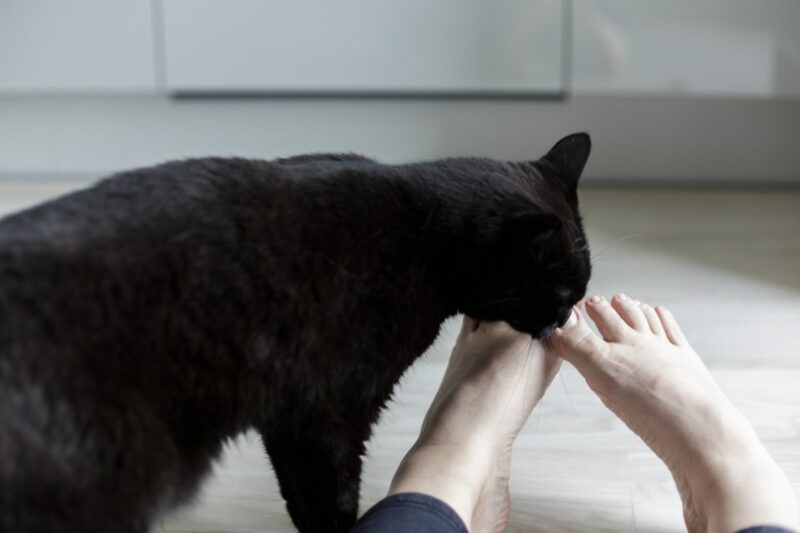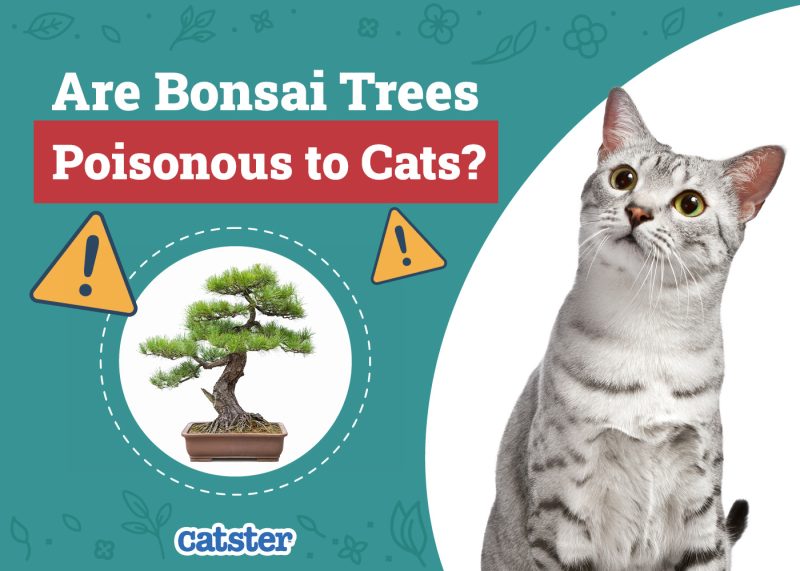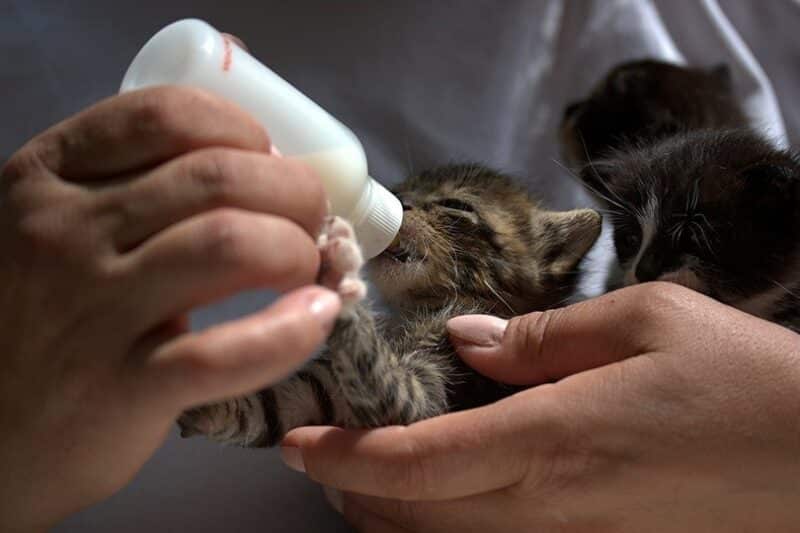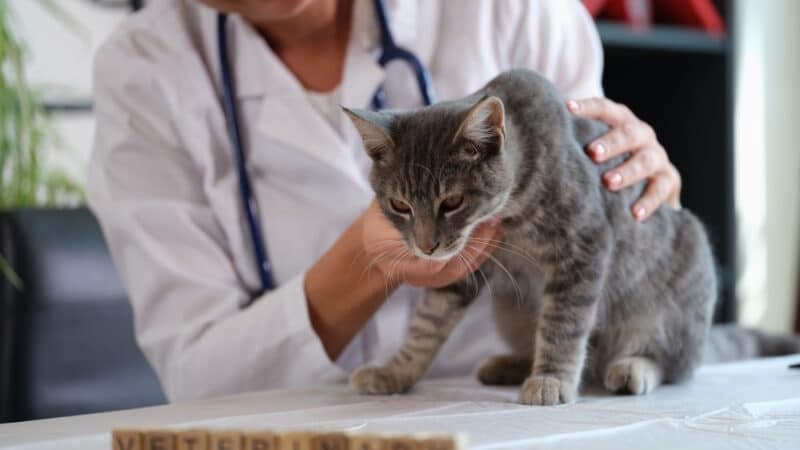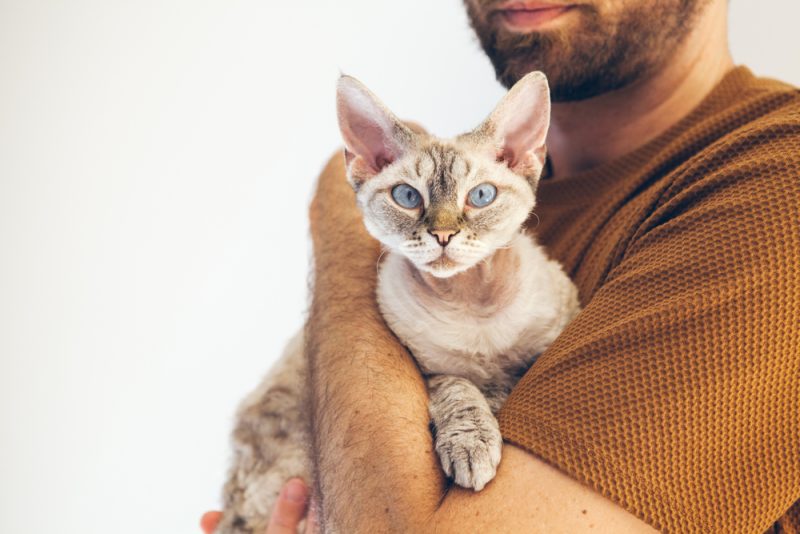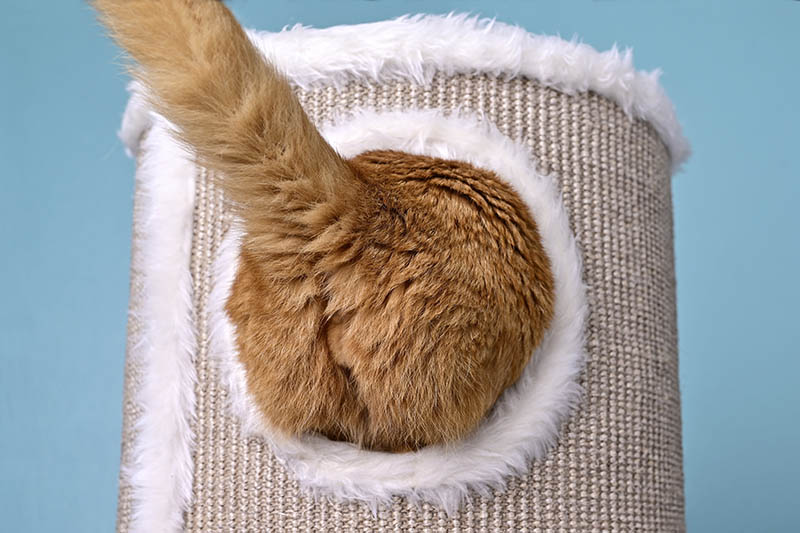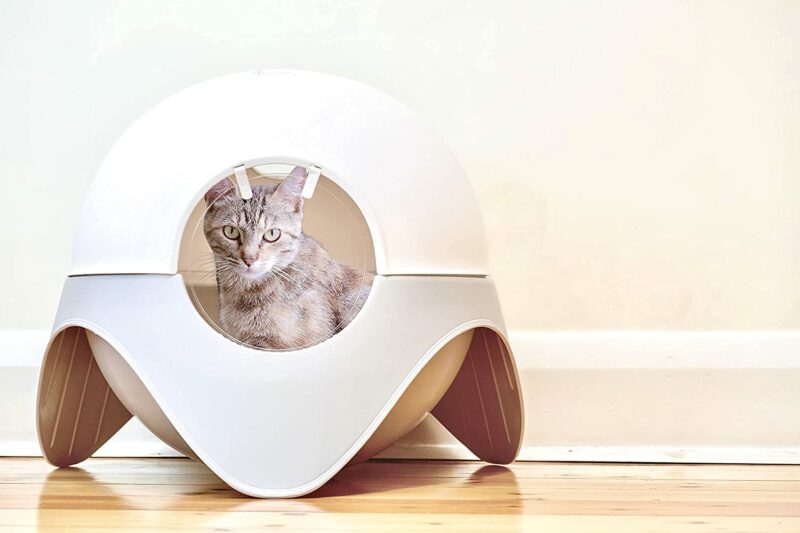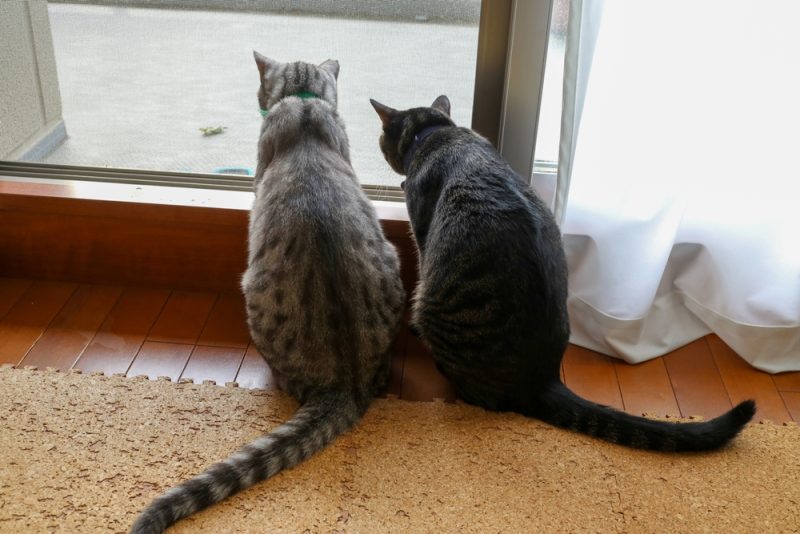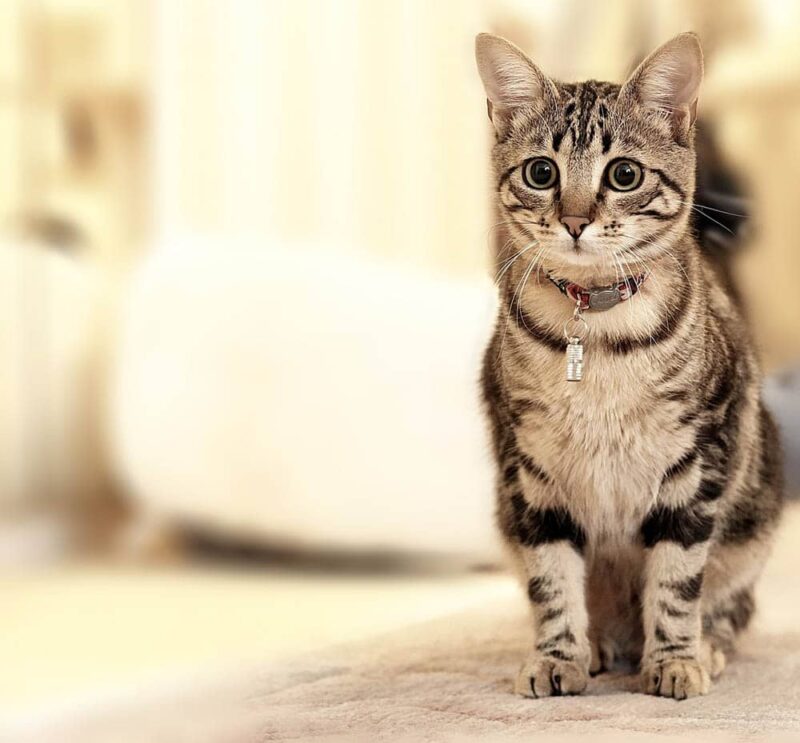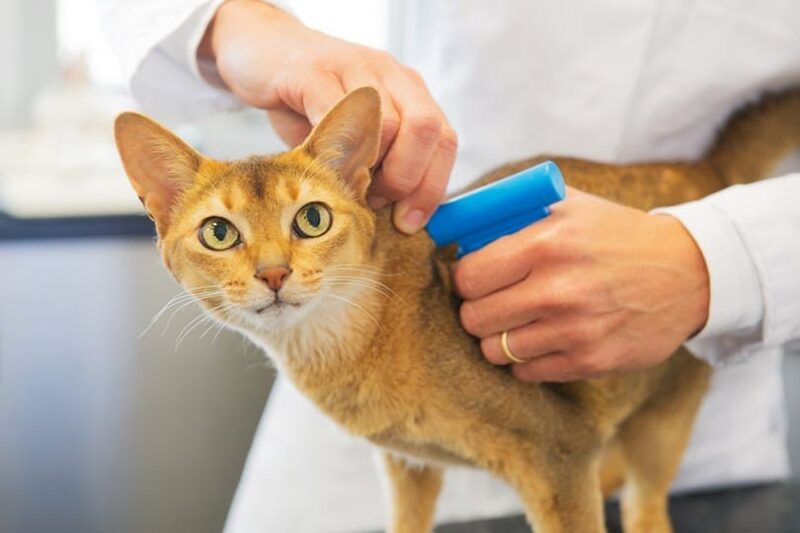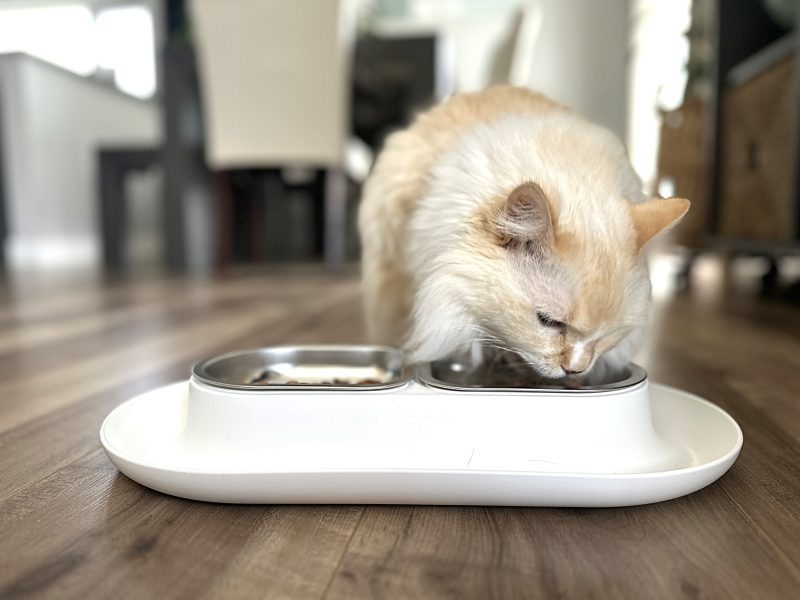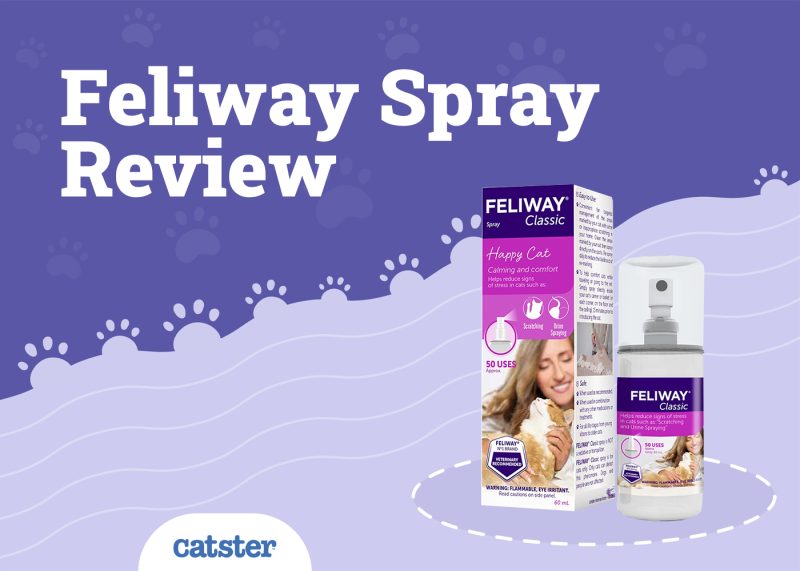Scratching is a normal cat behavior. Cats scratch for various reasons, such as to express certain emotions, maintain their claws, or mark objects with their scent. Just like cats have different reasons why they scratch, they also have preferences for items they like to scratch. Fortunately, you can find several kinds of scratchers that suit your cat’s unique tastes. Here are some styles of cat scratchers your cat may like.

The 10 Styles of Cat Scratchers
1. Scratching Pole
- Our Recommendation: MidWest Feline Nuvo Grand Forte 41-in Cat Scratching Post
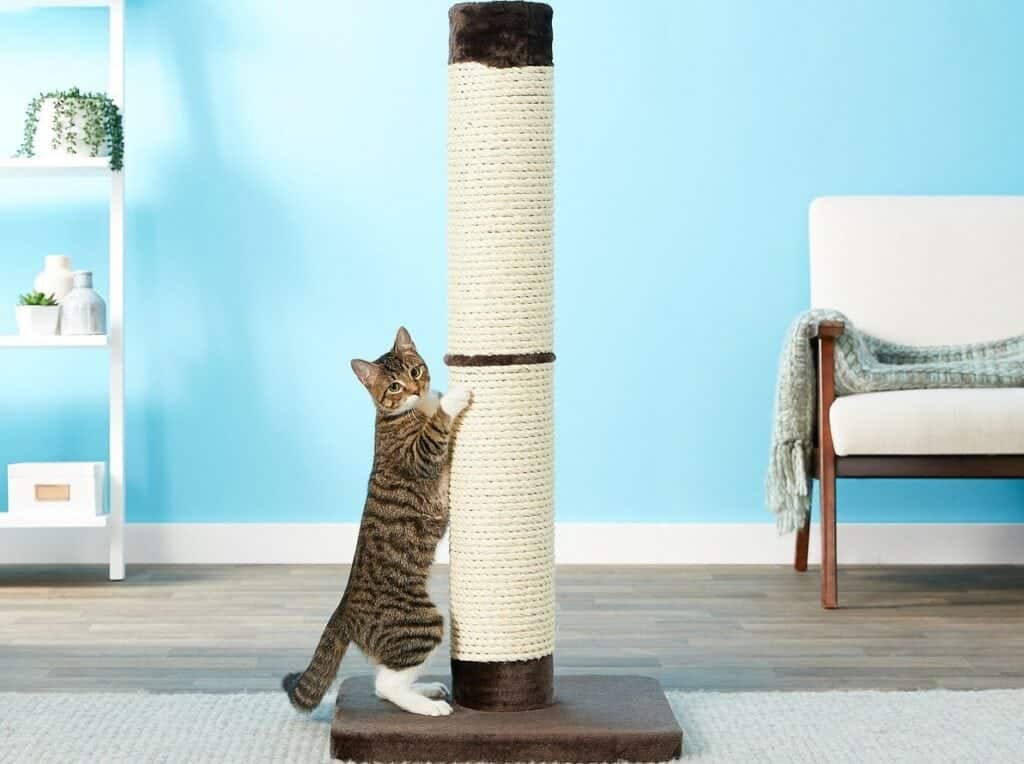
Scratching poles are one of the most common types of cat scratchers. They’re usually wrapped in sisal or carpet, and cats will stand on their hind legs and scratch their front claws on them.
Scratching poles come at varying lengths, so you can purchase a long one if you have a cat that enjoys climbing. They’re also usually incorporated into cat trees and condos, but you can also find standalone scratching poles with fun designs.
2. Cardboard Scratchers
- Our Recommendation: Hepper Hi-Lo Cat Scratcher
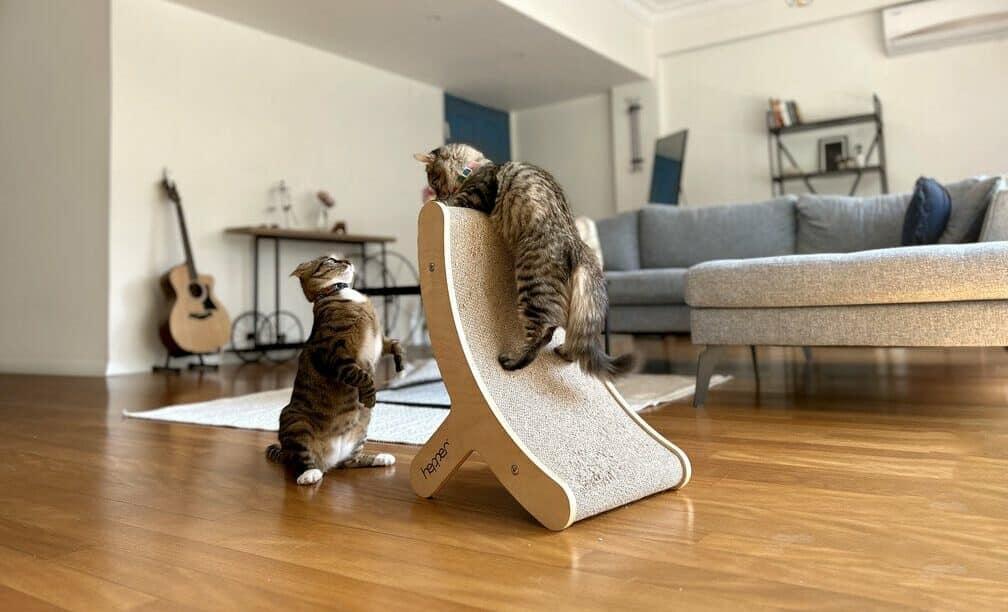
Many cats also enjoy the feeling of cardboard. It’s softer than sisal, but they can still grip it firmly. You can find smooth cardboard cat scratchers or textured scratches with grooves in them, and your cat may like just one type or both.
Most cardboard scratchers lie horizontally or are formed as beds. They’re usually much cheaper than other types of scratchers, but they don’t tend to last very long if you don’t get a good quality one like the Hepper Hi-Lo, for which you can buy replacement cardboard when needed.
At Catster, we’ve admired Hepper for many years and decided to take a controlling ownership interest, so that we could benefit from the outstanding designs of this cool cat company!
3. Scratcher Mat
- Our Recommendation: Petlinks Scratch & Play Mat Cat Scratcher Toy with Catnip
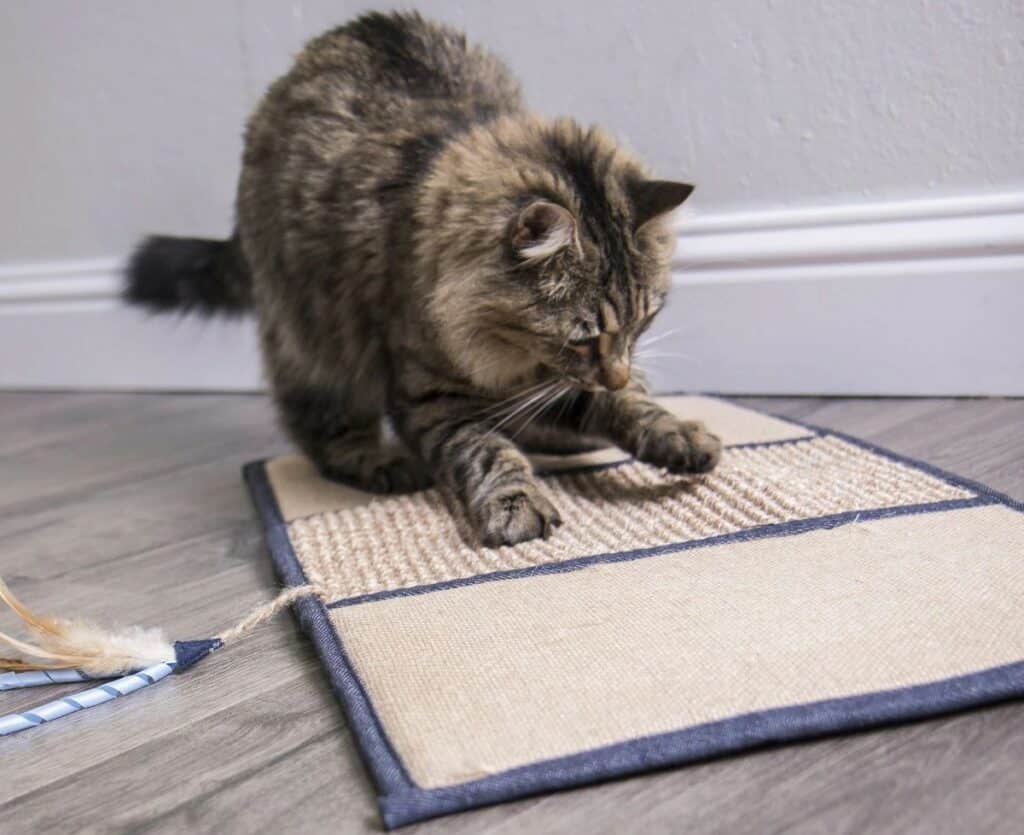
Scratcher mats are another popular type of cat scratcher. Some cats don’t like standing and would rather be on all fours when they scratch. Scratcher mats are made with all kinds of materials, including sisal, cardboard, and seagrass, so you can easily find one your cat enjoys.
Another great thing about scratcher mats is that once your cat has finished scratching, they can lounge and relax on them. They’re also easy to stow away when not in use since you can slide them under a couch or place them behind furniture. Some can also be rolled up and stored in a cabinet or closet.
4. Scratcher Ramp
- Our Recommendation: K&H Pet Products Creative Kitty Scratch, Ramp & Groom Cat Toy
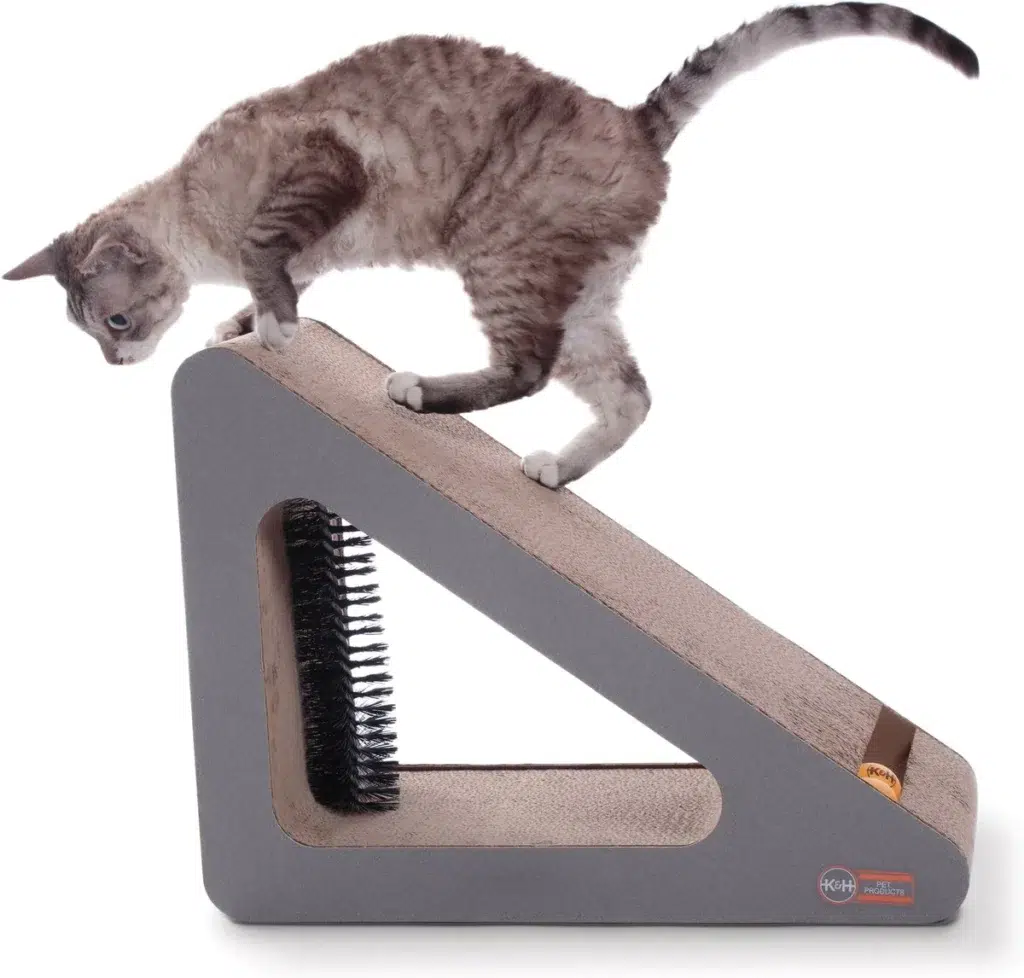
The scratcher ramp is the happy medium between the scratching pole and the scratcher mat. Scratcher ramps are made at varying inclines. Some are steep and just allow cats to lean against them for a little more support. Other scratcher ramps have curves designed to make lounging on them more comfortable for cats.
One unique benefit of scratcher ramps is that they usually have a dual function. Cats can scratch them, and since they’re raised on an incline, they provide a hiding space underneath for your cat.
5. Scratcher Toys
- Our Recommendation: AGYM Natural Sisal Cat Scratching Ball
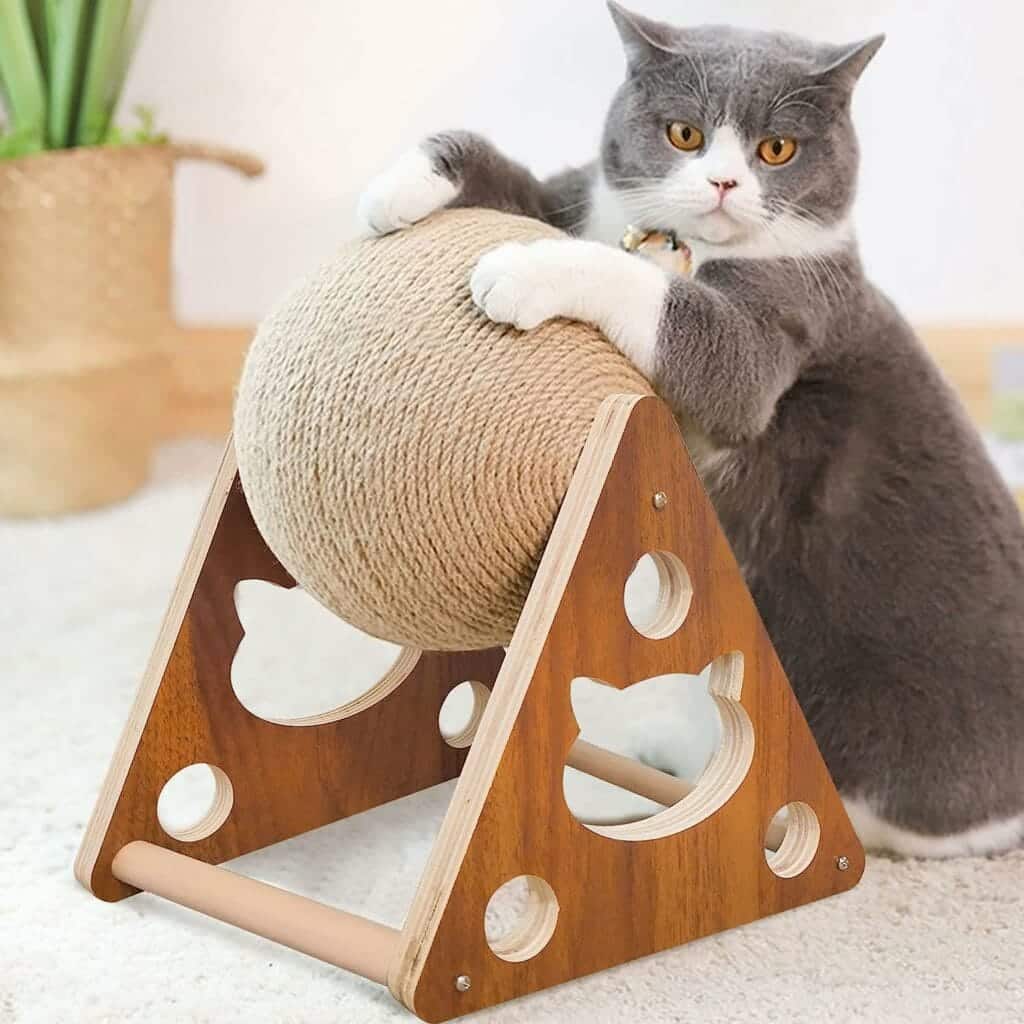
Some are built with compartments and holes where you can hide treats. Occasionally, cat scratcher toys will also be infused with catnip to add a fun component for cats.
6. Scratcher Stickers
- Our recommendation: Way Basics Katwall Wall Scratching Post with Catnip
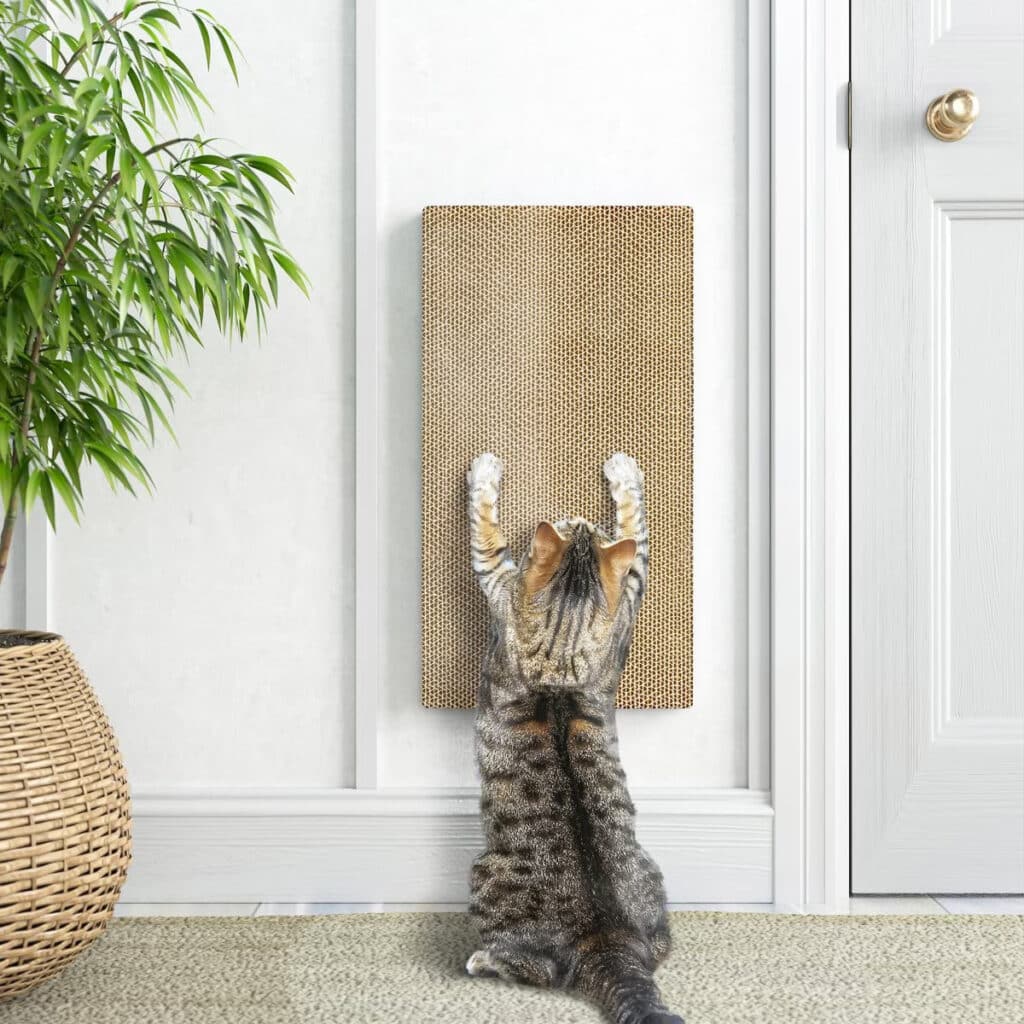
Scratcher stickers are like scratcher mats with one adhesive side. Depending on the adhesive, you can stick them on all kinds of surfaces. They’re often used to protect doorposts, walls, and furniture from damage. So, if your cat has a habit of scratching the side of your couch, you can try sticking a scratcher sticker over the spot they usually scratch.
When choosing a scratcher sticker, make sure to check the type of surfaces the adhesive can stick to. If the adhesive is too weak, it won’t stick to fabrics, but if it’s too strong, it can damage fabrics and walls.
7. Sisal Scratchers
- Our Recommendation: Heavy Duty Sisal Cat Scratching Post
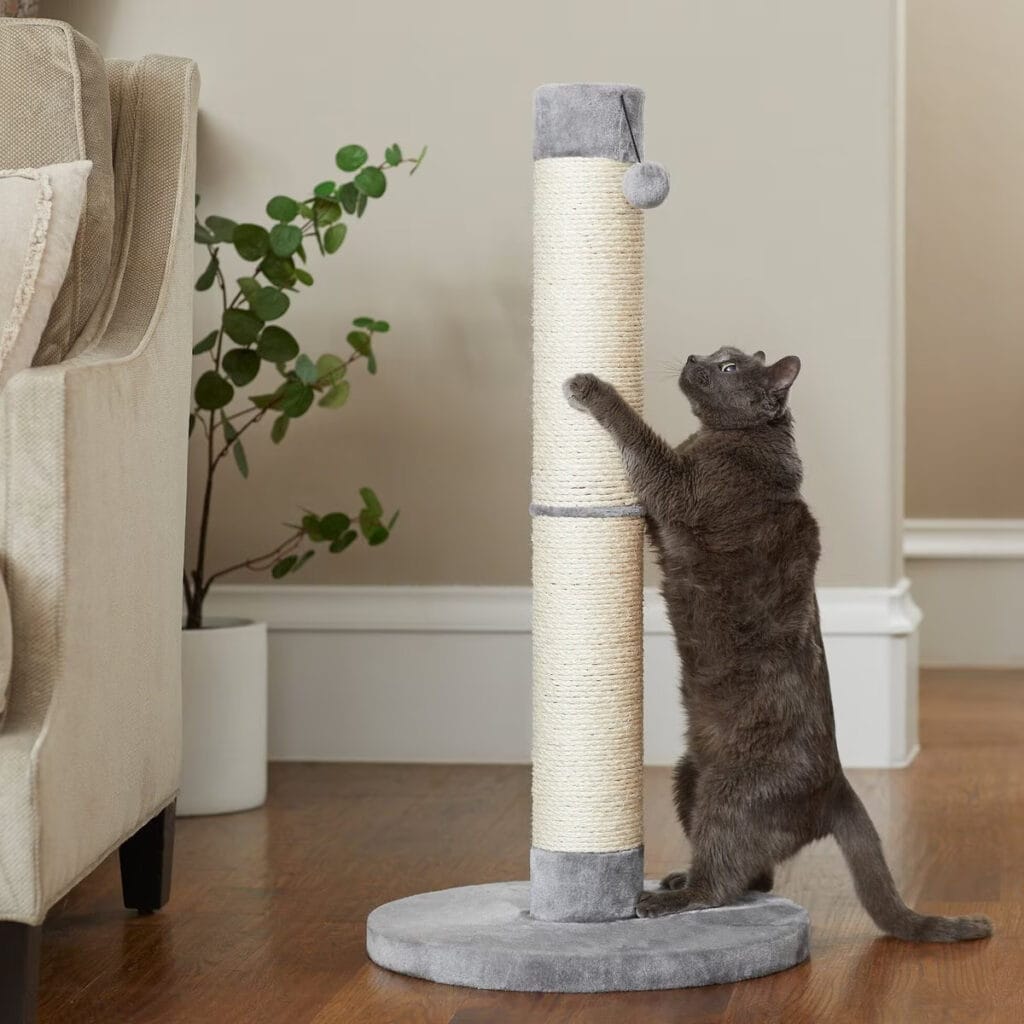
The material of cat scratchers is also essential to cats. The most popular material used for cat scratchers is sisal. Sisal is a natural fiber sourced from agave leaves, and it has a naturally stiff texture and creamy color. Many cats love scratching sisal because they can get a good grip on it.
When shopping for a cat scratcher made of sisal, make sure it’s made with 100% natural sisal. Cheaper scratchers use rope made with synthetic material, which will cause them to wear down much more quickly.
8. Carpet Scratchers
- Our Recommendation: SmartyKat Scratch Scroll Cat Scratcher
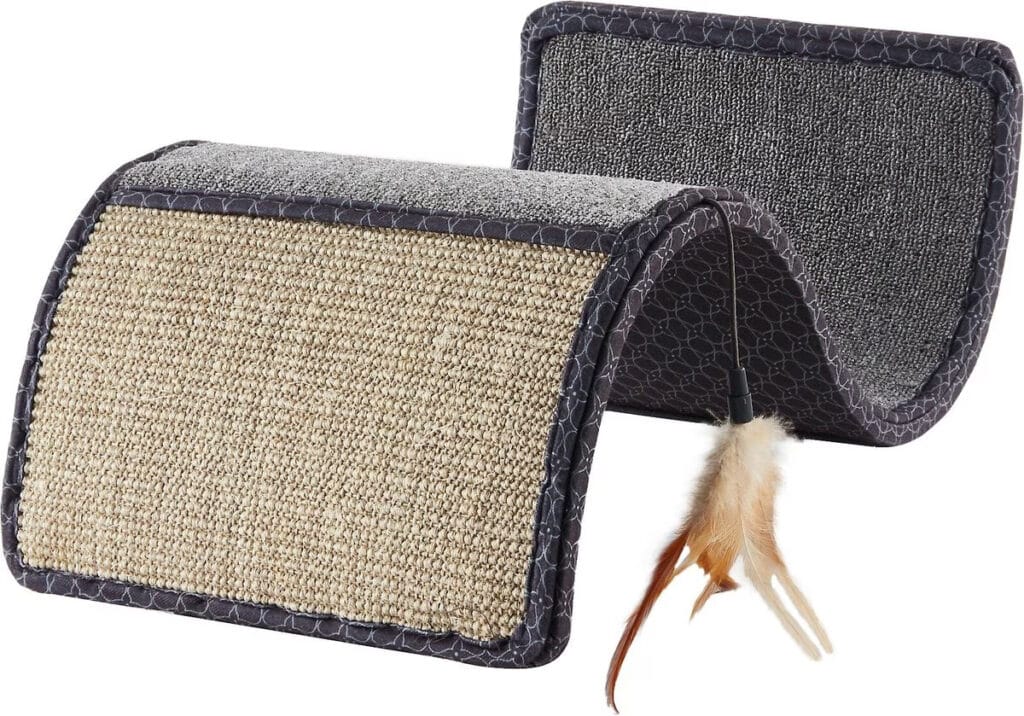
Carpet scratchers are excellent alternatives for cats that like to scratch mats and rugs in your home. They can either have a flat design or be wrapped around a pole and come in various colors.
Carpet cat scratchers tend to be affordable and last a decent amount of time. However, they’re not the most eco-friendly option as they’re often made with synthetic materials, like nylon and polyester.
9. Wood Scratchers
- Our Recommendation: Natural Scratch Cat Scratching Post
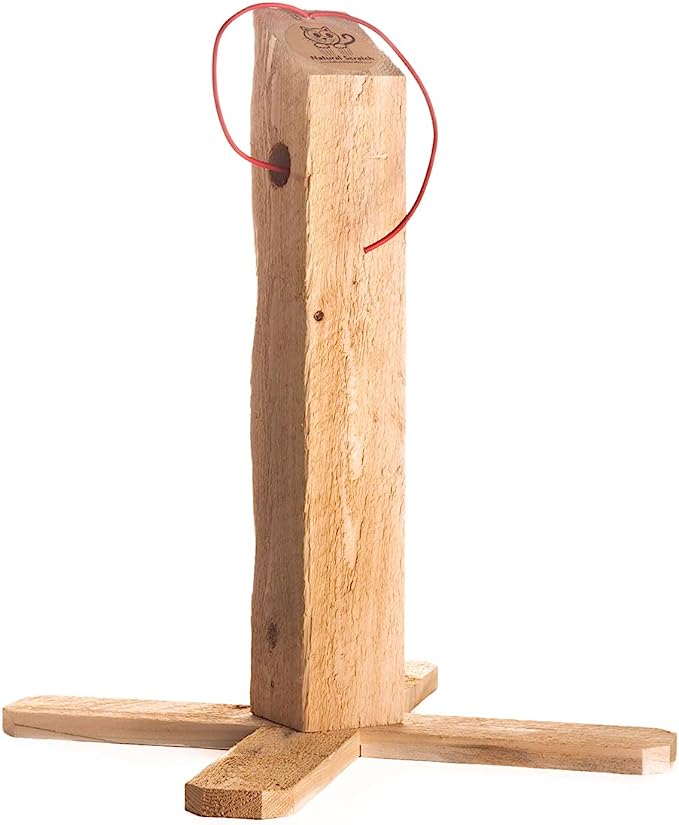
Wooden cat scratchers are less common, but many cats enjoy them because they feel the most natural. They usually come in the form of poles and are made at varying lengths. They’re an ideal alternative for cats that have a habit of scratching doorposts.
Wood scratchers are more expensive, but a high-quality wood scratcher usually lasts for a long time. Just make sure to look out for splinters and sawdust as it wears down with use.
10. Seagrass Scratchers
- Our Recommendation: Petlinks Sea Ramp Seagrass Angled Cat Scratcher

You can occasionally find cat scratchers made with dried seagrass. Seagrass has a fibrous texture similar to sisal but is more resistant to trapping dirt and debris. It’s also biodegradable and a better option for anyone looking to shop consciously.
The downside to seagrass is that it’s prone to mold and mildew. If a seagrass cat mat gets wet, you can try air-drying it to salvage the material, but there’s a good chance it’ll get soft and moldy if it sits in liquid for too long.

Conclusion
The likelihood of your cat using a cat scratcher will depend on the shape of the scratcher and the material. You may need to experiment with different combinations, and your cat may enjoy using several styles of scratchers. It’s always fun learning something new about your cat, so make sure to have fun with the process of exploring different cat scratcher options and discovering your cat’s unique tastes.
Featured Image Credit: Evgenia Terekhova, Shutterstock


